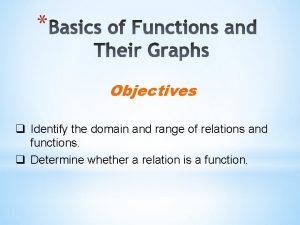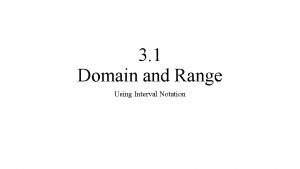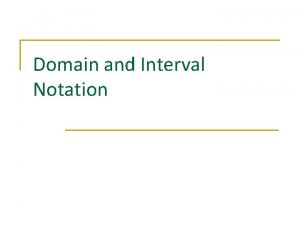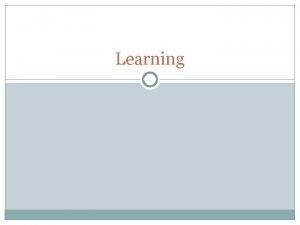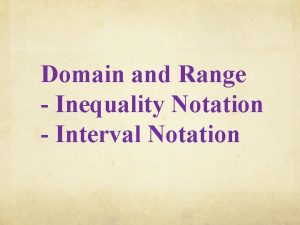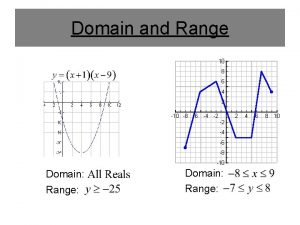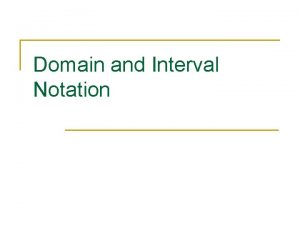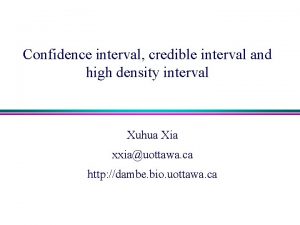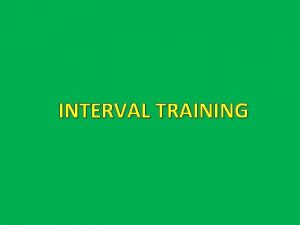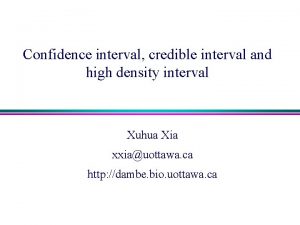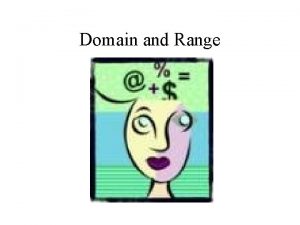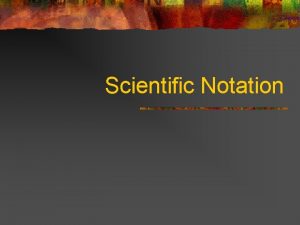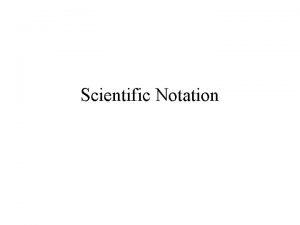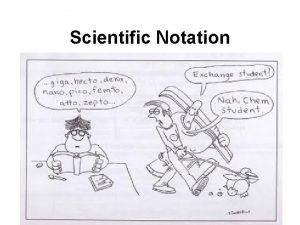WarmUp Domain Range Interval Notation VerticalLine Test A


















- Slides: 18

Warm-Up

Domain, Range & Interval Notation

Vertical-Line Test A set of points in the xy-plane is the graph of a function if and only if every vertical line intersects the graph in at most one point.

A function is a set of ordered pairs of numbers (x, y) such that no x – values are repeated. What are the domain and range of a function? The domain and range of a function are sets that describe those ordered pairs.

Domain: In a set of ordered pairs, (x, y), the domain is the set of all x -coordinates. Range: In a set of ordered pairs, (x, y), the range is the set of all ycoordinates.

The set of ordered pairs may be a limited number of points. Given the following set of ordered pairs, find the domain and range. Ex: {(2, 3), (-1, 0), (2, -5), (0, 3)} If a number Domain {2, -1, 0} occurs more than once, you do not : need to list it Range {3, 0, -5, -3} more than one

The set of ordered pairs may be an infinite number of points, described by a graph. Given the following graph, find the domain and range.

Domain: {all real numbers} Range: {y: y≥ 0}

The set of ordered pairs may be an infinite number of points, described by an algebraic expression. Given the following function, find the domain and range. Example : Domain {x: x≥ 5} : Range {y: y≥ 0}

Domain & Range When stating the domain and range of a function, you have to look at the beginning and end of your function in order to properly label the domain and range. Inequality (Set) Notation End Marking • ◦ Notation Use ≤ Use < ∞ Do not write. Leave that side blank If both ends of domain or range go to infinity, use єR or x y єR

Inequality (set) Notation 1. Start with the domain- how far to the left does the function go? -5 2. What is the end marking? What inequality symbol will you use? Closed dot, so ≤ 3. How far to the right does the domain go? What symbol will we use? 3, closed dot so ≤ 4. Now to the range- What is the lowest point my function reaches? What symbol? D: -5 ≤ x ≤ 3 R: -3 ≤ y ≤ 4 -3, ≤ 5. What is the highest? Symbol? 4, ≤

Domain & Range Interval Notation End Marking • ◦ Notation Use [ or Use ( or ] ) ∞ or∞ ) Use (- ets g ys s!! a i w ∞ al enthes par

Interval Notation 1. Start with the domain- how far to the left does the function go? -5 2. What is the end marking? What interval symbol will you use? Closed dot, so [ 3. How far to the right does the domain go? What symbol will we use? 3, closed dot so ] 4. Now to the range- What is the lowest point my function reaches? What symbol? D: [-5, 3] R: [-3, 4] -3, [ 5. What is the highest? Symbol? 4, ]

Interval Notation 1. Start with the domain- how far to the left does the function go? -8 2. What is the end marking? What inequality symbol will you use? Closed dot, so [ 3. How far to the right does the domain go? What symbol will we use? Infinity, ) 4. Now to the range- What is the lowest point my function reaches? What symbol? Negative infinity, ( 5. What is the highest? Symbol? D: [-8, ∞) 4, ] R: (- ∞ , 4]

Interval D: R: Inequality D: R:

Interval D: R: Inequality D: R:

Interval D: R: Inequality D: R:

Interval D: R: Inequality D: R:
 How to find domain and range
How to find domain and range Interval notation domain and range
Interval notation domain and range Domain in set notation
Domain in set notation Introduction to functions (review game)
Introduction to functions (review game) Domain of a vertical line
Domain of a vertical line Nada cg berjarak
Nada cg berjarak Variable ratio vs variable interval
Variable ratio vs variable interval Fixed interval vs variable interval
Fixed interval vs variable interval Warmup ratio
Warmup ratio Warmup 65
Warmup 65 Gmass warmup
Gmass warmup Stratified warmup
Stratified warmup Surface area warm up
Surface area warm up Monorhyme
Monorhyme Adding exponents rules
Adding exponents rules Java warmup
Java warmup Define:warmup
Define:warmup Ethos warmup
Ethos warmup Tinman running calculator
Tinman running calculator
